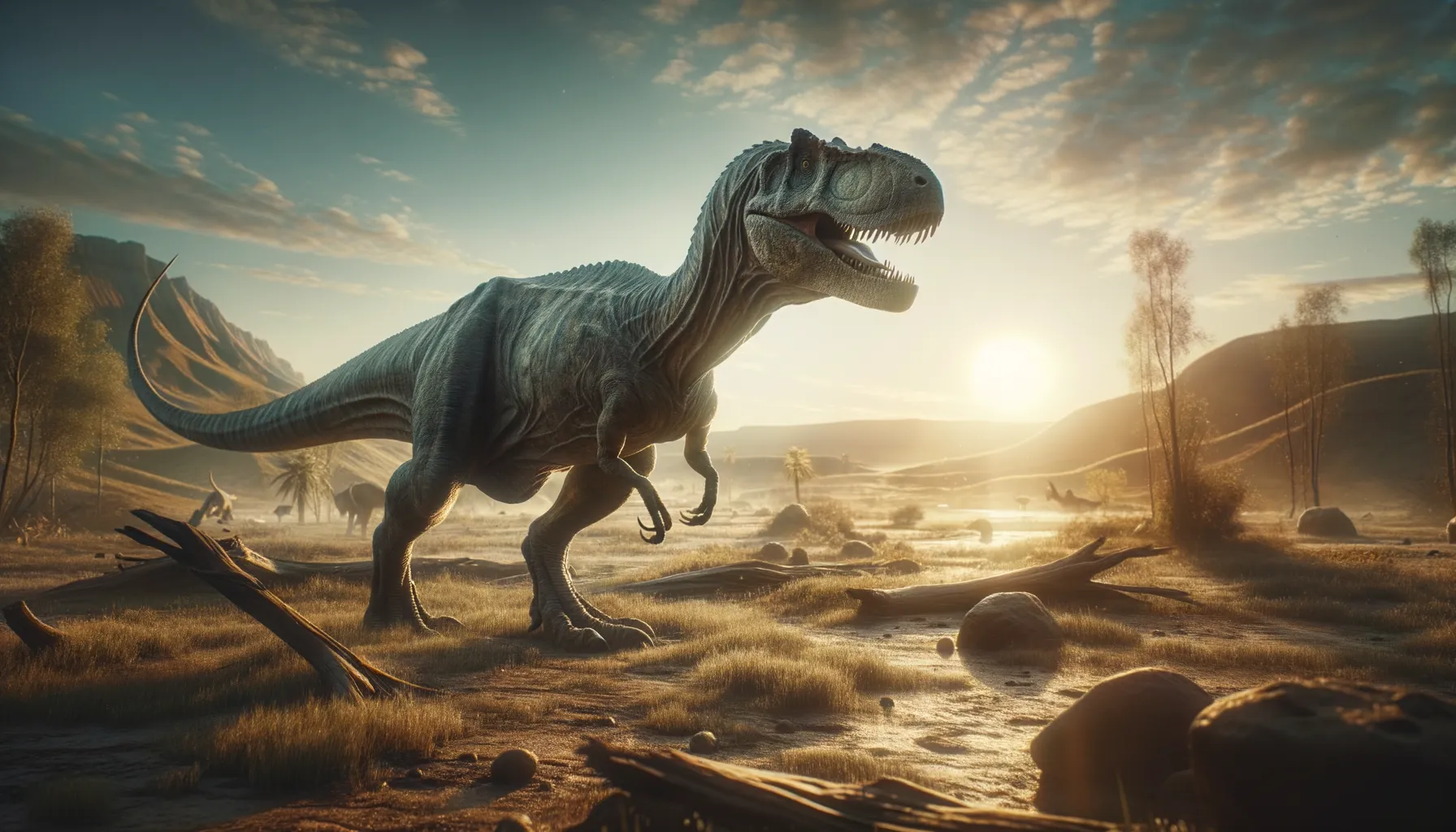
Herrerasaurus
Pioneering predator of prehistoric times!
Period
Triassic
Length
About 3-4 meters long.
Height
Roughly 1.1 meters tall.
Weight
Approximately 180 kg.
Herrerasaurus was a formidable carnivorous dinosaur from the Late Triassic period, roaming ancient landscapes approximately 230 million years ago. Known for its agile and sleek build, it played a pioneering role in the early evolution of dinosaurs. Its fossilized remains were first unearthed in Argentina, offering crucial insights into the ancestry and development of the theropod line, which eventually gave rise to some of the most iconic dinosaurs.
Diet
Herrerasaurus was primarily carnivorous, preying on smaller animals. Its sharp teeth and claws made it an efficient hunter, consuming reptiles and smaller dinosaur species that shared its habitat.
Hunting
This dinosaur likely used speed and agility to catch its prey. Herrerasaurus had strong hind legs, enabling it to quickly sprint and ambush smaller creatures in its environment.
Environmental challenges
Herrerasaurus faced the challenge of coexisting with other early dinosaurs and reptiles. The competition for resources like food and habitat was significant, pushing Herrerasaurus to adapt quickly. Climate changes during the Triassic period may have altered its environment, influencing its dietary and survival strategies.
Speed
Fast runner, likely 25-30 km/h.
Lifespan
Estimated around 40 years.
First discovery
Discovered in Argentina in 1959.
Fun Facts
- Herrerasaurus lived about 231 million years ago during the Late Triassic period.
- It was one of the earliest dinosaurs and gives scientists clues about the evolution of later species.
- Herrerasaurus was a carnivore, meaning it ate meat, possibly hunting small and medium-sized animals.
- It was relatively small compared to later dinosaurs, measuring around 3 to 6 meters in length.
- The fossilized remains of Herrerasaurus were first discovered in Argentina in 1959.
- Despite its early appearance in the dinosaur timeline, its relatives are not well-known, making it unique.
- Herrerasaurus shared its habitat with other early dinosaurs, as well as with non-dinosaurian reptiles.
Growth and Development
Like other dinosaurs, Herrerasaurus grew rapidly during its early years. Skeletal studies suggest that it reached full size relatively quickly, allowing it to fend off predators and hunt efficiently. Juveniles may have experienced different growth rates based on environmental conditions and food availability.
Habitat
During the Triassic period, Herrerasaurus inhabited a warm and dry environment with seasonal changes. It lived in areas with vast floodplains and sparse vegetation where it could hunt and hide. River systems and woodlands provided essential resources for its survival.
Interaction with other species
Herrerasaurus likely encountered early dinosaurs and other reptiles in its ecosystem. It may have engaged in territorial disputes or direct competition for food with similar-sized predators. Its interactions with non-predatory species included preying upon them as part of its diet.
Natural lifespan
Herrerasaurus probably lived up to 40 years in optimal conditions.
Reproduction
Herrerasaurus was an egg-laying species, with nests likely hidden in secluded areas. Parental care might have been minimal, as common in early dinosaurs, with hatchlings fending for themselves soon after emerging.
Social behaviour
This dinosaur was likely solitary or formed small, temporary groups. Males might have competed for territory and mates during the breeding season, though they generally avoided social interaction.
Fossil locations
Herrerasaurus fossils have been primarily found in Northwestern Argentina, particularly in the Ischigualasto Formation. These areas have yielded a wealth of information about Triassic fauna, offering snapshots of early dinosaur life.
